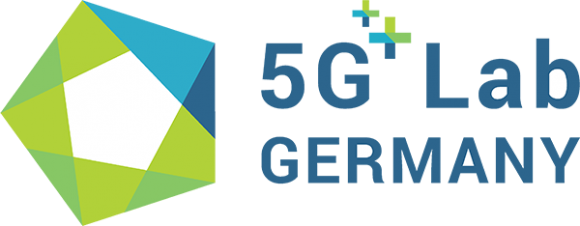Friday, 10 January 2020
8:30-12:00
TUT-01: 6G: The Next Frontier, Academic, Industrial and Standard Perspective
TUT-02: The Internet of Underwater Things: From Design to Experimentation
TUT-07: Methods of Corporate Surveillance
13:30-17:30
TUT-03: Blockchain for 5G and IoT: Use Cases, Opportunities and Challenges
TUT-04: IoT Systems and Smartness – Virtualization, Protocols, Intelligence and Proof of Concept
TUT-05: Current Issues and Future Directions in Drones and FANET Management
Monday, 13 January 2020
8:30-12:00
TUT-06: Machine Learning Radio Resource Management for Future Mobile Networks
TUT-09: Breaking 5G with IoT/IIoT/WSN and Fixing It with Energy Harvesting
TUT-01: 6G: The Next Frontier, Academic, Industrial and Standard Perspective
AM - Half-day Tutorial
Date: Friday, 10 January 2020
Time: 8:30-12:00
Room: Laughlin I
Speaker: Emilio Calvanese Strinati
Abstract: 5G networks represent a breakthrough in the design of communication networks, for their ability to provide a single platform enabling a variety of different services, from enhanced mobile broadband communications to virtual reality, automated driving, Internet-of-Things, etc. Nevertheless, looking at the increasing requests for new services and predicting the development of new technologies within a decade from now, it is already possible to envision the need to move beyond 5G and design a new architecture incorporating new technologies to satisfy new needs at both individual and societal level. The goal of this tutorial is to motivate the need to move to a sixth generation (6G) of mobile communication networks, starting from a gap analysis of 5G, and predicting a new synthesis of near-future services, like holographic communications, high precision manufacturing, a pervasive introduction of artificial intelligence and the incorporation of new technologies, like sub-THz or Visible Light Communications (VLC), in a truly 3-dimensional (3D) coverage framework, incorporating terrestrial and aerial radio access points to bring cloud functionalities where and when needed on demand.
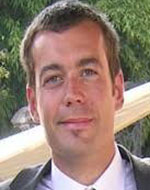 Emilio Calvanese Strinati
Emilio Calvanese Strinati
Dr. Emilio Calvanese Strinati obtained his Engineering Master degree in 2001 from the University of Rome ‘La Sapienza’ and his Ph.D in Engineering Science in 2005. He then started working at Motorola Labs in Paris in 2002. Then in 2006 he joint CEA/LETI as a research engineer. From 2007, he becomes a Ph.D supervisor. From 2010 to 2012, Dr. Calvanese Strinati has been the co-chair of the wireless working group in GreenTouch Initiative which deals with design of future energy efficient communication networks. From 2011 to 2016 he was the Smart Devices & Telecommunications European collaborative strategic programs Director. Since December 2016 he is the Smart Devices & Telecommunications Scientific and Innovation Director. In December 2013 he has been elected as one of the five representative of academia and research center in the Net!Works 5G PPP ETP. From 2017 to 2018 he was one of the three moderators of the 5G future network expert group. Between 2016 and 2018 he was the coordinator of the H2020 joint Europe and South Korea 5GCHAMPION project. Since July 2018 he is the coordinator of the H2020 joint Europe and South Korea 5G-AllStar project. Since 2018 he holds the French Research Director Habilitation (HDR).
E. Calvanese Strinati has published around 120 papers in international conferences, journals and books chapters, given more than 100 international invited talks, keynotes and tutorials. He is the main inventor or co-inventor of more than 60 patents. He has organized more than 80 international conferences, workshops, panels and special sessions on green communications, heterogeneous networks and cloud computing hosted in international conferences as IEEE GLOBCOM, IEEE PIMRC, IEEE WCNC, IEEE VTC, EuCnC, IFIP, EUCnC and European Wireless.
TUT-02: The Internet of Underwater Things: From Design to Experimentation
AM - Half-day Tutorial
Date: Friday, 10 January 2020
Time: 8:30-12:00
Room: Laughlin II
Speaker: Stefano Basagni, IEEE Senior member, Northeastern University, Boston, USA
Abstract: This tutorial is intended to provide a comprehensive introduction to the latest research directions, methodologies and technologies for the emerging paradigm of the Internet of Underwater Things (IoUT). In particular, we will explore networking challenges and solutions for the compelling scenario where key IoUT applications are being defined and developed, namely, for underwater wireless networking.
The course will provide details on the following:
- Motivations and challenges: Applications, relevant funding programs, trends and tendencies (half an hour).
- State-of-the-Art: A survey on current research on underwater wireless communication and networking, from hardware to software (two hours).
- Tools for underwater networking protocol design. Experimentation and deployment; multi-modality; energy harvesting and machine learning routing techniques for the variable channels (and hour and fifteen minutes).
- Research directions and open problems (half an hour).
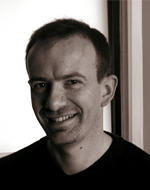 Stefano Basagni
Stefano Basagni
Assistant Professor
Northeastern University, Boston, USA
Stefano Basagni holds a Ph.D. in electrical engineering from the University of Texas at Dallas (December 2001) and a Ph.D. in computer science from the University of Milano, Italy (May 1998). He received his B.Sc. degree in computer science from the University of Pisa, Italy, in 1991. He is currently an associate professor at the Department of Electrical and Computer Engineering at Northeastern University, in Boston, MA. He is also affiliated with Northeastern's Institute for the Wireless Internet of Things.
Dr. Basagni's current research interests concern research and implementation aspects of mobile networks and wireless communications systems, wireless sensor networking for IoT (underwater and terrestrial), definition and performance evaluation of network protocols and theoretical and practical aspects of distributed algorithms.
Dr. Basagni serves as a member of the editorial board, the organizing committee and of the technical program committee of ACM and IEEE journals and international conferences. He is a distinguished scientist of the ACM (including the ACM SIGMOBILE), a senior member of the IEEE (Computer and Communications societies), a member of ASEE (American Society for Engineering Education) and of CUR (Council for Undergraduate Education).
TUT-03: Blockchain for 5G and IoT: Use Cases, Opportunities and Challenges
PM - Half-day Tutorial
Date: Friday, 10 January 2020
Time: 13:30-17:30
Room: Laughlin III
Speaker: Madhusanka Liyanage , Assistant Professor, School of Computer Science, University College Dublin, Ireland
Abstract: Hitherto, the evolution of mobile networks has continued to fulfill the new demands for enhanced performance, portability, elasticity and energy efficiency posed by popularity- driven network services. In line with the progression, 5G mobile network is being designed in a way that it enthusiastically embraces the new networking concepts to further improve these offerings. Underpinning of 5G will soon turn out to be an indispensability for interconnection of massive Internet of Things (IoT) devices and will potentially transform the data landscape for such devices. However, the current centralized architecture models of mobile networks and also of more general IoT systems will face tremendous challenges to meet-up the requirements of future 5G-enabled-IoT use cases. To solve these inevitable issues, blockchain technology, featured with decentralization, cryptographic techniques, consensus-driven mechanism, etc., can offer an intriguing alternative. Blockchain technology has received all-around attention by the industry as well as academic. It has been viewed as one of the most important innovations since the inception of Internet as far as immutability, non-repudiation, proof of provenance, integrity, privacy, etc. are concerned. However, the technology is still in its infancy. Moreover, its combination with 5G and IoT still requires essential insights with respect to concrete application domains, scalability, privacy issues, performance, and potential financial benefits. The tutorial aims to elaborate and emphasize the key aspects of the use of blockchain for 5G and IoT, and will provide the opportunity for the attendees to ponder on the latest emerging use cases of blockchain.
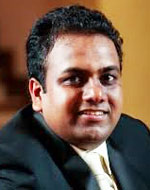 Madhusanka Liyanage
Madhusanka Liyanage
Assistant Professor
School of Computer Science, University College Dublin, Ireland
TUT-04: IoT Systems and Smartness – Virtualization, Protocols, Intelligence and Proof of Concept
PM - Half-day Tutorial
Date: Friday, 10 January 2020
Time: 13:30-17:30
Room: Laughlin II
Speakers:
R. Venkatesha Prasad, The Delft University of Technology, the Netherlands
Abdur Rahim Biswas, FBK, Italy
Abstract: Internet of Things (IoT) has been making waves and is permeating into the everyday life of people. All the smart-* applications are built around IoT. The smartness and artificial intelligence in IoT is important and that should at the point of interest in the IoT system and framework. It very much depends on the application to application and context to context. One application may require the intelligence at the sensors to optimize the sensing as well as communication, another application may need the intelligence in the Gateway and others may require at the application layers. This tutorial will empathize the above facts and besides will provide an overview of IoT first and then discuss various dimensions of IoT including the practical challenges with Proof of concept of low cost and open source IoT hardware and software platform from WAZIUP. WAZIUP developed highly low cost, DIY and open sources IoT solutions for start-ups, developers and entrepreneurs. This tutorial will demo the IoT end-to-end IoT solutions. These include IoT long- range networking (LoRa), architecture framework including gateway and software platform, open horizontal platform, explaining all components from the bottom up (i.e. from the things with a focus on sensors and interconnection of the things). The open horizontal platform is being developed to solve the interoperability problem of the Internet of Things. It provides a layer of system abstractions and APIs to enable application software to interact with a diverse set of IoT resources and protocols.
This tutorial will describe some examples of data integration across different data sources are shown in the context of user applications. And demonstrate the importance of the smartness at the point of interest. Further focus on the different enabling technologies like real-world objects virtualization, cognitive and Artificial intelligence technologies, real-world knowledge proofing, objects networking, harvesting technologies, etc. The tutorial will also provide several IoT application for the developing nation.
The tutorial may be scaled up to 6 hours by providing several hands-on examples of integration if necessary upon discussion with organizer. We present architectures of Internet of Things, open source horizontal platform including different abstraction layers with APIs, enabling, enabling technologies. The goal is to (1) explain IoT and related concepts, (2) give an overview and explain the functionality of the components and technologies of the horizontal open IoT platform, (3) explain IoT protocols and communication technologies (4) explain how different technologies and components (virtual objects, composite virtual objects, cognitive and artificial intelligence, machine learning and data mining) can be used to connect the “things” at various levels of abstraction including service layers; (5) interplay between Big data analytics and Cloud IoT PaaS, (6) Proof of concept of low cost and DIY IoT from WAZIUP and (7) group discussion and further directions.
 R. Venkatesha Prasad
R. Venkatesha Prasad
The Delft University of Technology, the Netherlands
TUT-05: Current Issues and Future Directions in Drones and FANET Management
PM - Half-day tutorial
Date: Friday, 10 January 2020
Time: 13:30-17:30
Room: Laughlin III
Speaker: Floriano De Rango, Associate Prof. In Telecommunication and Networking Technologies, DIMES Dept., University of Calabria, Italy
Abstract: Flying Ad Hoc Networks (FANET) are gaining a lot of interest in these last years. Many new applications are proposed by academy and industrial companies and many sensors are enriching the potentialities of this new technology. However, many opens issues need to be faced in order to design reliable and responsive FANET under many constraints such as the environmental conditions, the energy budget, the multi-radio technology, the weight and the sensor pack on-board.
The current tutorial wants to cover some research issues related to the channel modeling of drones, medium access control, routing and transport protocol under dynamic conditions such as drones’ mobility, energy constraints and sensor equipment. Some specific application domains such as precision agriculture, video surveillance, on-demand connectivity will be considered. Moreover, future possible directions in this emerging field will be shown considering also the potential integration with IoT domain, the 5G technologies and the energy harvesting technologies applied to FANET.
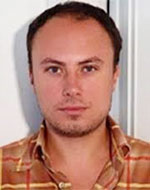 Floriano De Rango
Floriano De Rango
Associate Prof. In Telecommunication and Networking Technologies
DIMES Dept., University of Calabria, Italy
TUT-06: Machine Learning Radio Resource Management for Future Mobile Networks
AM - Half-day Tutorial
Date: Monday, 13 January 2020
Time: 8:30-12:00
Room: Laughlin I
Speaker: Li-Chun Wang, IEEE Fellow, Electrical and Computer Engineering, National Chaio Tung University
Abstract: We are witnessing the transition into the fifth generation (5G) cellular mobile systems. Is there any need for beyond 5G? A significant change in recent wireless networks is that much more data are collected from various sources, including channels, locations, radio access options, and network states. The availability of this large amount and various types of data can potentially transform the current knowledge-driven mobile network into a more powerful data-driven cognitive and learning-assisted mobile network.
In this tutorial, we first discuss various types of learning algorithms: supervised learning, unsupervised learning, and reinforcement learning. Second, we examine how these learning algorithms can address the performance issues of high-capacity ultra-dense small cells in an environment with dynamical traffic patterns and time-varying channel conditions. In particular, we introduce a data-driven bi-adaptive self-organizing network (Bi-SON) which can exploit the power of data-driven resource management to address the performance issues of ultra-dense small cells (UDSC). On top of the Bi-SON framework, we will examine how a polynomial regression supervised learning, and an affinity propagation unsupervised learning algorithm can improve energy efficiency and reduce interference in system operator deployed small cells and customer plug-and-play small cells, respectively. We will also examine how reinforcement learning can improve the performance of UDSC further.
Finally, we discuss deep reinforcement learning (DRL) approaches proposed to address various challenges in modern networks which are more decentralized, ad-hoc, and autonomous in nature, such as Internet of things (IoT), vehicle-to-vehicle network, unmanned aerial vehicle (UAV) network, and heterogeneous networks (HetNet).
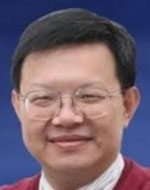 Li-Chun Wang
Li-Chun Wang
IEEE Fellow
Electrical and Computer Engineering, National Chaio Tung University
TUT-07: Methods of Corporate Surveillance
AM - Half-day Tutorial
Date: Friday, 10 January 2020
Time: 8:30-12:00
Room: Laughlin III
Speaker: Dr. Isabel Wagner, De Montfort University, Leicester, United Kingdom
Abstract: News headlines about privacy invasions, discrimination, and biases discovered in the platforms of big technology companies are commonplace today. The headlines -- ranging from comprehensive profiling of users, to microtargeting of political messages, to discrimination based on gender, race, and age -- show that big tech's operations can cause real-world harm.
However, big tech companies are reluctant to disclose how they operate and typically do not give out specific information, such as what data they collect or how their algorithms make decisions. This secretive operation counteracts ideals of transparency, openness, and accountability.
This tutorial will present research methods and findings from the last ~5 years that use large-scale experiments to systematically interact with the publicly accessible elements of big tech's platforms. These experiments allow inferring details about big tech’s hidden operations -- in essence conducting meta-surveillance against big tech. For example, findings from these experiments have documented how user tracking works, the extent of tracking on the web today, and how the collected information is used for algorithmic decision-making and ad targeting.
 Dr. Isabel Wagner
Dr. Isabel Wagner
De Montfort University, Leicester, United Kingdom
Isabel Wagner is an Associate Professor in Computer Science
(Cybersecurity) at De Montfort University, UK. She is a Senior Member of
ACM and IEEE. Her research focuses on privacy and transparency,
especially on methods to quantify and enhance privacy and transparency.
In particular, she has studied metrics to quantify the effectiveness of
privacy protection mechanisms, as well as privacy-enhancing technologies
in genomics, vehicular networks, social graphs, and smart cities.
TUT-09: Breaking 5G with IoT/IIoT/WSN and Fixing It with Energy Harvesting
AM - Half-day Tutorial
Date: Monday, 13 January 2020
Time: 8:30-12:00
Room: Laughlin III
Speaker: Brian Zahnstecher, IEEE Senior Member, Principal, PowerRox, San Jose, CA, USA
Abstract: It might seem counterintuitive that a bunch of micro- or milliwatt level devices could hold the entire fate of the next-generation cellular network (i.e. – 5G) and even local utility grid stability in their hands, but is precisely the dilemma we are currently faced with. While there is a lot of attention on network deployment and upgrades and the energy efficiency of larger hardware (HW) and radio aspects (i.e. – data center equipment, spectral efficiency, etc.), there is little to no attention on how the energy utilization of so many edge devices will roll-up to impact the larger systems. One may find a lot of discussion around the billions or even trillions of edge devices hanging on the fringes of these massive networks in even just the next few years, but the “5G Energy Gap” is a serious issue that threatens to impede both the technical and business viability of the 5G network.
This tutorial shall first investigate how so many, tiny power devices on the edge provide the biggest risk to increasing the “5G Energy Gap” and therefore adding uncertainty to the ability of newly deployed network infrastructure to support so many devices and expanded onto potential disruption of local grids aggregated up to the full, utility-scale level. It is important to demonstrate how these concepts and risks are ever-present across all deployment scenarios from hyperdense to the most rural in the world of the Internet of Things (IoT), Industrial IoT (IIoT), and wireless sensor networks (WSN). There will be some very clear linkages made to demonstrate how microwatt devices can quickly determine the fate of terawatts, which is an 18-order-of-magnitude dynamic ratio!!! Then, we shall breakdown the true, endto-end network from edge to power plant (i.e. – the full, power value chain) and explore the constituents for contribution to overall, network energy utilization. More importantly, we shall explore energy saving opportunities in each of these components with priority given to largest power consumers and best opportunities for savings (luckily, going hand-in-hand).
Perhaps even more counterintuitive, the corrective action to these systemic risks is inexorably tied to energy harvesting (EH) and the ability to supplement edge device power budgets. Given the relatively low power needs, scavenging ambient energy is an ideal solution that is far more pragmatic and costeffective (in most, but not all applications) than using primary energy storage cells and is certainly more ecofriendly given the mitigation of hazardous materials with disposable battery use. In harsh environment and/or inaccessible applications, battery replacement may not even be an option or the cost to perform the operation exceeds the material costs by orders of magnitude. The tutorial will close with an extensive overview of EH solutions with associated ecosystem, how they fit into the application space being discussed, and explain how they will address the “5G Energy Gap” with some real-world case studies.
The tutorial is intended for Network Engineers, Industrial Designers, IoT/Ultra-Low Power product Design Engineers, Cloud & Edge-Device Architects, Equipment Deployment Designers/Implementers, Analog & Digital Electrical Engineers, Manufacturing Engineers, Facilities Managers, Device Architects, & Technical Marketing/Sales Personnel associated with developing, optimizing, and enabling products/industries for the telecommunications industry and its supporting applications.
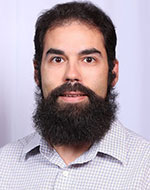 Brian Zahnstecher
Brian Zahnstecher
IEEE Senior Member
Principal, PowerRox, San Jose, CA, USA
Brian Zahnstecher is a Sr. Member of the IEEE, Chair (Emeritus) of the IEEE SFBAC Power Electronics Society (PELS), sits on the Power Sources Manufacturers Association (PSMA) Board of Directors, is Cofounder & Co-chair of the PSMA Reliability Committee, Co-chair of the PSMA Energy Harvesting Committee, and is the Principal of PowerRox, where he focuses on power design, integration, system applications, OEM market penetration, market research/analysis, and private seminars for power electronics. He Co-chairs the IEEE Future Directions (formerly 5G) Initiative webinar series and leads Power for the 5G Roadmap, authored the Group’s position paper, and has lectured on this topic at major industry conferences. He previously held positions in power electronics with industry leaders Emerson Network Power (now Artesyn), Cisco, and Hewlett-Packard, where he advised on best practices, oversaw product development, managed international teams, and designed and optimized voltage regulators. He has been a regular contributor to the industry as an invited keynote speaker, author, roundtable moderator, and volunteer. He has over 15 years of industry experience and holds Master of Engineering and Bachelor of Science degrees from Worcester Polytechnic Institute.





